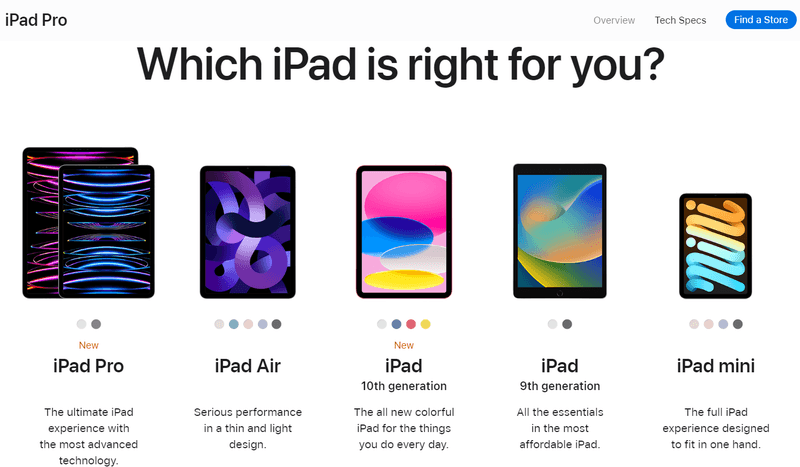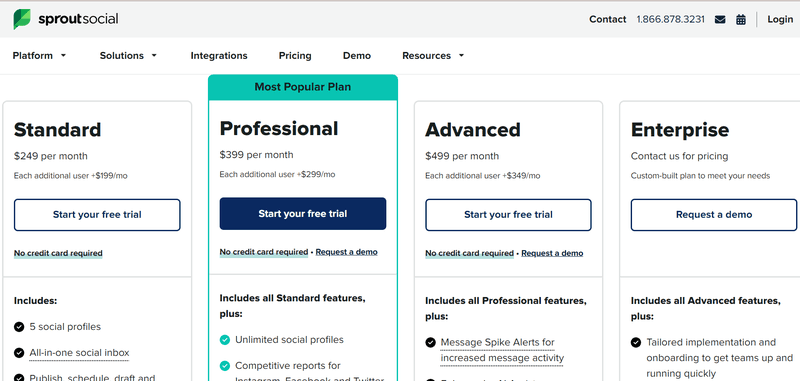Subscription Pricing Strategy: How to Price Your Subscription Service.
Your subscription business will fail unless it is profitable and generates sufficient revenue. Learn how to formulate an optimal subscription pricing strategy for your business.
The subscription business model has proven to be effective at driving revenue. It enables automatic billing, ensures a steady stream of predictable revenue, and offers a convenient way for customers to pay for goods and services they love and use frequently.
But no matter how much revenue you get and how satisfied your customers are with your product and service, your business will struggle if you don’t charge the right price for your subscription offerings.
Underprice and you will be as busy as a bee but as poor as a church mouse. Overcharge, and you struggle to attract and retain customers. So, somewhere in between is the sweet spot, but how do you arrive at the right subscription price?
In the next passages, we will discuss subscription pricing. You will learn how to price your subscription service and deliver optimum customer value.
How much should you charge for a subscription service?

There is a notable difference between subscription-based and traditional pricing, where a customer makes a one-time payment to use/receive a service or buy a physical product.
With subscription-based pricing, customers make regular payments for a product or service. The price a customer pays is based on the length of the subscription and the product features they enjoy.
Therefore, the process of pricing a subscription is a little more complicated. It is like breaking up the cost of providing the service and the profit you would expect for it and spreading it over the length of the subscription.
What makes this tricky is in the subscription business model, customers can cancel at any time. So, you need to set a price that allows you to turn a profit early in the life of a subscription, which is easier said than done.
The right subscription price should not be an arbitrary number you pull from the sky. It should be where these three things intersect:
Your brand values,
Your industry’s pricing standard,
Your target customers’ perception of a value subscription.
Every brand has a set of values it promotes. Some brands advance equality, diversity, and inclusion, others relentlessly chase quality, while some use fair pricing to drive customer value.
If you are motivated to deliver the highest quality products and services, your prices will be higher. Those who seek the middle ground between inclusivity and profit will charge lower prices.
But while your own perceptions on how much you should charge for your subscription product matter, it is worth looking at what the competition is doing. After all, your customers will compare your prices against the competition’s to determine which of you delivers the highest bang for their buck.
So, the right subscription price is what your customers feel your product is worth but allows you to make a decent profit. So, how do you calculate that price, and what should you consider?
How is the subscription price calculated?

The traditional way of pricing is to add a markup to the cost of producing and delivering that good or service. However, this requires a more nuanced approach to subscription pricing because the price is reduced to a monthly recurring fee.
Your subscription prices should balance maximising your profit and delivering value to the customer. So, your prices can’t be too high or too low.
Cost plus margin calculation.
Your costs represent the sum of what you spend to produce and deliver your product or service to customers. This includes your fixed and variable costs.
That’s your breakeven point, above which you enter profit territory. How much you add to those costs is your profit. It is your margin when expressed as a percentage of your total costs.
The math here is straightforward. You list and add up all your costs and add your margin. These costs will include what you spend on labour, materials, software, rent, marketing, etc. Any costs you neglect to add here will count as uncompensated costs.
Whatever pricing strategy you intend to follow, you must know your costs. If you don’t, you will never know how much you make in terms of profit. You will be flying blind.
What you add as your margin represents your pricing strategy or whether you intend to sell at prices lower or higher than your competitors or you want to match them.
We will suggest pricing strategies you can use to optimise your subscription prices in a minute. First, here are some subscription pricing tips to ensure you are working off the correct baselines:
How to price your subscription product.
The cost-plus-margin approach is a good starting point that ensures you are not working for free. But it should be just that: a starting point. To maximise your profits or determine what your price ceiling should be, you want to do the following.
1. Research your market.
The market provides a guide on how far you can push your prices. Unless your product is demonstrably superior and delivers more value, you want to stay within the competition’s price range.
You should research the market and establish who your direct competitors are and what prices they are charging.
Your goal here is to be competitive by not charging over the average market prices and not to leave money on the table by charging well below the market average. This approach to subscription pricing is known as competitor-based pricing, where the competition influences your pricing decisions.
Your job is obviously harder if you are first to market. But if you are entering a market with established players, you can use their pricing as a template or as a jumping-off point.
2. Define your revenue goals.
Your revenue is your prices multiplied by the volume of subscriptions. It is not the same as your profit, but if your business is profitable, revenue drives growth.
Since meeting revenue targets indicates growth, you must define how much revenue will deliver the growth a healthy business should achieve. And sometimes, all it takes to achieve optimum growth is a price bump of a few shillings.
3. Research your target customers.
Beyond what it costs to produce and deliver a product or service is what your target customers are able and willing to pay. It is essential to establish their perception of value. This is the essence of value-based pricing.
The best pricing strategies consider the expectations of the target customer. It’s your job to find out what those expectations are. Among the factors you must consider when researching your target customers are:
Their average age.
Similar or other subscriptions they have.
What they value most about your product.
Some age and demographic groups are more thrifty than others. These are more likely to choose cheaper options regardless of value, especially if it’s not a luxury subscription.
You are more likely to get away with charging a higher price if your product or service has a feature they value so much they are willing to pay a premium.
But you can only know this if you take the time to study your target customers. Talk to them to find out what their deepest wishes and pain points are. Survey them if you have to.
4 subscription pricing strategies you can use to maximise revenue.
The purpose of implementing a pricing strategy in your subscription business is to maximise your revenue. A good pricing strategy convinces customers to absorb a higher price without appearing manipulative.
As noted, successful subscription pricing requires you to know who you are selling to and how much they can pay. Whatever your final prices are, your customers must be able to afford them.
Here are the pricing strategies you can use to maximise your revenue:
1. Penetrative pricing.

This pricing strategy uses lower introductory prices to woo customers in the hope they can upsell or cross-sell them onto more profitable plans. The lower prices attract customers away from competitors.
Following the penetrative pricing strategy means forgoing higher profits in the short term in favour of a larger market share. The hope is that you will have cultivated enough loyalty in your customers for them to stick with you when you finally increase your prices.
This pricing strategy has been successfully used in the website hosting niche by companies like Bluehost. It works particularly well in industries where competition is high.
2. Captive pricing.
The captive pricing strategy charges a price much lower than expected for a core product and then makes up for it by charging a premium for its more useful features.
You charge a lower-than-expected price for a stripped-down version of the product and then, after capturing the customer, upsell them on the features or consumables that make the product truly functional.
If it’s a software tool, you would have a low-priced basic plan with just enough features to make it work. The users should find the version in the basic plan too limited in its functionality quickly enough to want to upgrade to the fully featured but more profitably priced plan.
The captive pricing strategy is quite effective in highly competitive markets where consumers have many options.
But how should you price if you have virtually no competition?
3. Skimming pricing.
Where you are first to market with a product, you can profit from that first-mover advantage with higher introductory prices. As your success draws competitors, some of whom have superior versions of your product, you gradually reduce your prices to appeal to the more price-sensitive sections of the market.
That is the premise of the skimming pricing strategy, otherwise known as ‘riding down the demand curve’. The novelty of your product and the bragging rights that early adopters envisage make the high price easier to bear.
What if you want to maintain those high prices long term? What conditions must exist for that to be a viable strategy, and what is that pricing strategy called?
4. Prestige pricing.
Prestige pricing is where you use high prices to differentiate your product and position it for a high-value clientele who will pay whatever it takes to buy and use certain products. The high prices will mean your client base will be smaller, which helps to render an image of luxury and exclusivity.
However, for the prestige pricing strategy to work, your product or service has to be of an exceptionally high quality. Wealthier clients have a keen sense of quality and will not pay high prices for sub-standard products.
Some brands choose not to pursue a prestige pricing strategy exclusively, conscious not to leave money on the table by not targeting lower-value customers. They will offer a pro/premium and significantly more expensive version of the same product, knowing fully well that a small market segment will afford it.
What’s interesting about the prestige pricing strategy is that as well as maintaining the high quality of your products, you must keep your prices high. You will lose some of your customers if you reduce your prices. Cutting your prices will be construed as signalling a drop in quality and standards.
What is a good subscription price?
Your subscription’s price should, first and foremost, cover your costs. That is critical for the good health of your business. You must know your costs. After that, how much you charge depends on various factors and the pricing strategy you have chosen.
In a nutshell, a good subscription price covers your costs but allows you to add as high a markup as your customers are willing and prepared to pay.
So, whatever subscription pricing strategy you follow, your target subscribers must afford your product or service. Remember that if you are following the prestige pricing strategy, your subscription offering’s quality must measure up to the high subscription price.
Subscription pricing requires a strategic approach.
The success of your subscription business will depend on the viability of your subscription offering. Is it a product or service that a sizable section of the population needs or wants?
But more importantly, it is your pricing decisions that determine if you will gain customers quickly enough and build a sustainable business. You will need to adopt an optimal pricing strategy that recognises the competition, your customers’ needs, and your own revenue goals.
Remember, there’s no place for sentiment or gut feeling in subscription pricing. Use data and customer research to validate your preconceptions about what might work for your subscription offering.
Secondly, know that one size does not fit all. As well as the prices they can afford to pay, your customers’ needs will differ. That is why it is a smart approach to price your subscription product in tiers, with a cheaper basic plan and more expensive plans with more premium features.
Pricing in tiers opens room to upsell and cross-sell your customers as their needs change. Remember, too, that prices can always change. If you have improved the product significantly or your costs have increased, you may need to increase prices to maximise revenue or remain profitable.
So even though subscription pricing requires a strategic approach, that strategy and the prices must not be set in stone. Your pricing must evolve with the business as determined by the competitive environment and the shifting needs of your customers.
Ready to put your subscription business idea into action? You will need a robust subscription and automatic billing software to build your business.
Intasend is the platform to build your subscription business. Our tested business payment and billing tools are the bedrock on which some of the most successful businesses in Kenya run. We have used the same technology and skills to build our subscription management software.
Sign up for an Intasend business account to access our subscription and automatic billing software and unlock the benefits of automated recurring payments. Do you want to sample the software before committing? Request a demo here.

